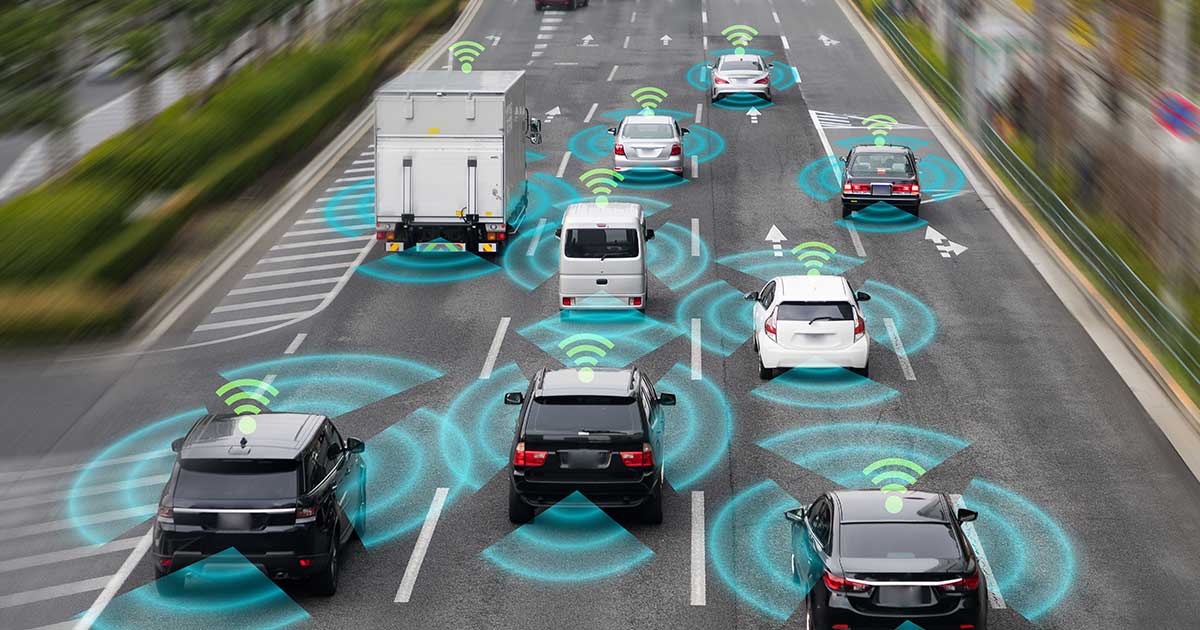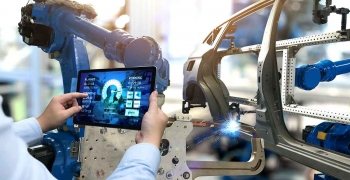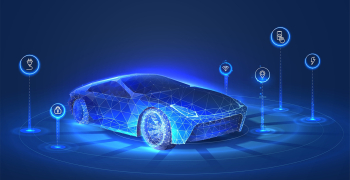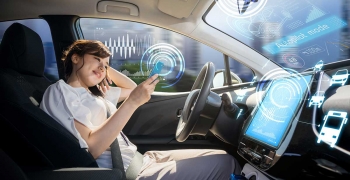Paul’s apartment is located in one of the busiest neighborhoods in the city and traffic at rush hour often reaches colossal levels. Every morning, Paul is faced with a near herculean task of navigating through an endless river of slow-moving SUVs, sedans, and the occasional steaming carburetor of an angry office goer just to reach his place of work. But in this seemingly overwhelming fight against traffic, Paul is not alone. As he takes his place behind the steering wheel, his vehicle wishes him good morning and immediately draws up a navigation route that not only allows Paul to bypass the suffocating traffic but also stops by his favorite coffee shop for his regular cup of pre-ordered pumpkin latte. Talking cars are no longer a figment of cinematic fantasy.
The technology enabling vehicles to communicate with each other, the driver, the road, and pretty much anything that can (read, needs to) talk back is vehicle-to-everything (V2X). V2X enables vehicles to talk with each other and their surroundings via a steady stream of data. This exchange of data can be regarding anything from information on traffic movement, accidents ahead, to the prediction of a collision course. But what is most impressive about this ‘language of cars’ is what this veritable data goldmine can help accomplish. Safer roads, faster routes, and the reduced adverse environmental impacts of road transportation are some of the fronts this technology is set to impact, and that’s just from the vantage of an end user.
Let’s revisit Paul’s situation for a moment. With a pumpkin latte in one hand and steering wheel in the other, Paul continues his journey to work reassured of his safety. But hold on a minute, where does Paul get this confidence to multi-task from? At the back of his mind, there’s V2X taking care of his safety through vehicle-to-grid communication and alerts such as intersection and forward collision warning, curve speed warning, and control loss warning. Whenever needed, features like cooperative cruise control and wrong way driver alert also have his back.
While the car cruises along, the rich pool of data accumulated through aggregation can be leveraged to identify traffic patterns and driver profiles. Simply put, Paul’s pretty much covered even in the unfortunate case of a breakdown, where alerts are triggered so that the vehicle’s digital and mechanical components can self-adjust.
Paul may have enjoyed his coffee and reached his workplace with time to spare, but he didn’t have the luxury of taking his eyes completely ‘off’ the road. There were security threats he had to look out for, as electronic subsystems within the vehicle are known to be great entry-points for hackers.
V2X stakeholders have their work cut out to pave the way for truly autonomous cars. There’s data control standards compliance to stave off cybercrimes, and then there’s the threat of technology redundancy to contend with. As technologies like dedicated short-range communication (DSRC) and cooperative intelligent transport system (C-ITS) strive to deliver the V2X advantage, the industry faces the potential problem of redundancy of years’ worth of dedicated research should one of these technologies replace the others.
As with any ground-breaking technology, however, the challenges that V2X faces will be overcome. Perhaps the answer lies in the harmonious coexistence of connectivity solutions rather than the redundancy of some. And the use of solutions like over-the-air system updates, cloud-based solutions, and layer-based solutions could do the trick for security and data regulatory compliance.
Ultimately, the underlying communication technology can either be WLAN or cellular. While WLAN-based V2X solutions allow a greater degree of standardization, cellular V2X (C-V2X) supports a wider area of communication and easy migration to 5G. Also, with advantages ranging from mobility support to scalability and reliability, C-V2X is the ideal candidate in the 5.9 GHz ITS spectrum that can meet the current vehicle-to-vehicle (V2V) and vehicle-to-network (V2N) communication requirements.
Of all the players in the V2X ecosystem, automotive OEMs and network providers are likely to be most affected by this technology. They can develop predominantly data-driven business models that include product innovation, process innovation, and monetization model innovation. Flexible and powerful collaborations between network vendors and auto parts manufacturers, for instance, will open up a wide range offerings and aftermarket services such as accurate usage-based insurance (UBI). Partnerships to provide infotainment applications could also prove useful.
The business impact of V2X, however, will not remain confined to the automobile industry alone. V2X is very likely to cover beacon technology, bringing retail business dimension within its reach and applicability. For instance, on his way to office and back, Paul comes across not just the coffee shop but a slew of other outlets and service providers. On noticing a gas station enroute, V2X can read the distance to the next gas station and recommend when to fill the tank based on the level of gas in tank versus the time to the next outlet. V2X will not only make travel safer and smoother but also streamline errands for people.
It’s a future not just for OEMs and network providers, but also the rest of the world. One where autonomous driving systems (ADS) reign and Paul can travel the roads with a latte in one hand and his tablet in another.




